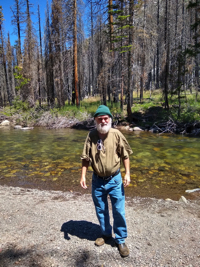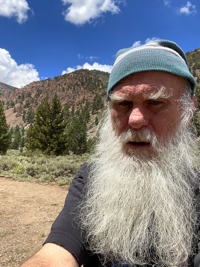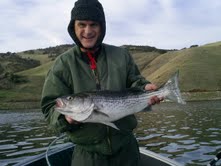
Field View Optics is bringing a better way to spot with leading-edge, high-performance 80mm optics that go where other scopes aren’t allowed.
The experts say, “No Way,” like cordless phones once were. “Don’t listen to them!” Enter the unexplored world of ultra-wide field 16X made simple.
The Corangulator ®
Watch her Walk
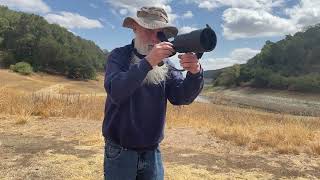
The Corangulator ®
Light weight, portable, wide field and simple operation is hard to find in modern spotting scopes. High power zoom, tripod, awkward controls, bells and whistles complete the ensemble. Field View Optics has breached this and the 20X barrier with an 80mm scope that handles like a 10 X 50 binocular, rangefinding capabilities and runs like traditional spotters too. See why this remarkable instrument comes about, how it’s built and what it can do for your next adventure.
The Why

The How

What it’s All About
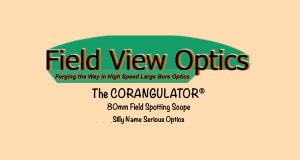
Simple Silent Ranging

FIELD OF VIEW
Measured at eyepiece in degrees 50° – 60° most common. Exit pupil diameter is impractical for apparent field values and sometimes listed on more expensive models.

For astronomy used to show sky coverage measured in arc minutes.

For Zoom, apparent values increase and angular values decrease as magnification increases. Linear & angular field of view has little use as a metric for terestrial purposes and similar for Astronomical applications.
Apparent field of view is a performance value that is sometimes listed on more expensive models. Exit pupil only shows the clear view diameter of the eyepiece and may not correlate to apparent field of view values.
Bridging the Gap
Binoculars have been around since the 16th century. Evolving from simple opera glasses to the modern catadioptic (lens&mirror) instruments we see today. Known for low power up to 12X, lightweight, compact, wide 100° fields and simple operation. Bird watchers, hunters, stargazers, sightseers and battle commanders love them.
The need for higher magification prompts the development of monocular spotting scopes. Clever marketing convinces everyone that zoom eyepiece, tripod and vague performance specifications are the standard. Wide field is only available in heavy expensive models.
The things that make the binocular so successful never follows through in spotting scopes. Only the dedicated observer and professional use them, possibly dreaming of something better. The gap is wide between low power easy operation and high power Jalopy’s. The zone between 12X and 20X is considered low margin, left vacant and off limits.
Field View Optics explores this region and develops a field spotting scope that does well in this domain while versatile enough to operate in the higher power levels of traditional spotters while maintaining the performance features of the legendary 10X50. Bridge the gap and bring back the thrill of viewing like it should be.
The Corangulator ®
About the Owner and Inventer
Ground and figured my first paraboloid and Astronomy merit badge at 14. That first look at the Trapezium through the scout master’s 12″ Newtonian and I’m hooked. I didn’t finish the rest of the build but came away with a sense of accomplishment and a new insight into how things work.
Understanding and fixing things is a part of my childhood. Broken baby dolls and wagons from younger kids and replacing a speaker cone with paper from a grocery bag fills my resume. This continues in the Air Force working the jets.
My tour ends and land in California. I do Avionics for commercial jets for a while, learn about computers from building and later maintaining machine tools. I get laid off and free lance for a while doing property maintenance, odd jobs and professional Poker dealing in between.
I get lost in the jungles of Los Angeles and manage to escape north in the late 90’s. Away from the city, the stars turn on for me and start building telescopes again. The beautiful vistas and birding start me building spotting scopes.
The final result is the Corangulator®



